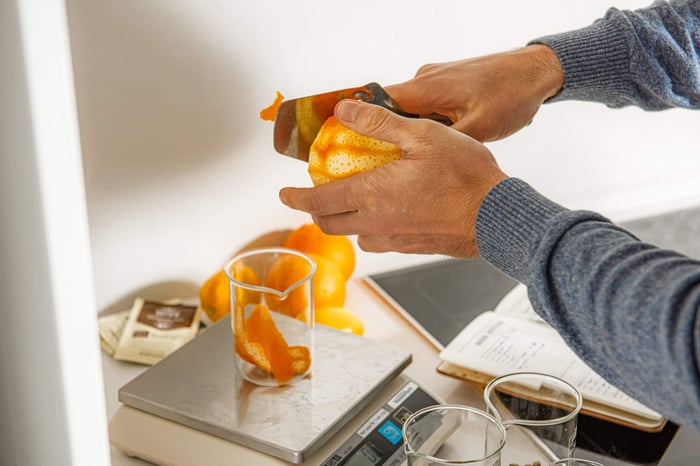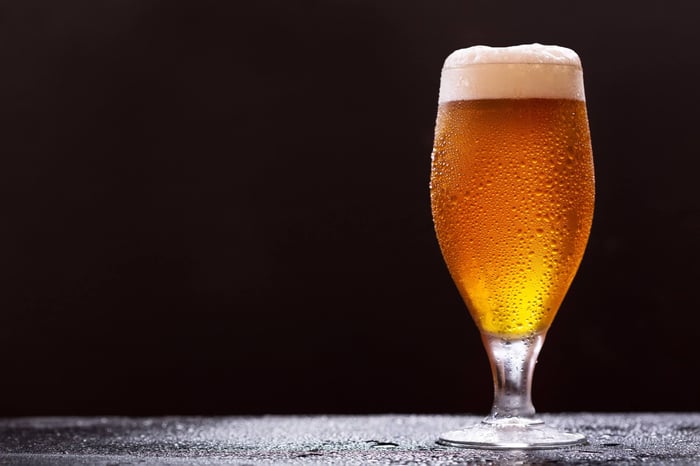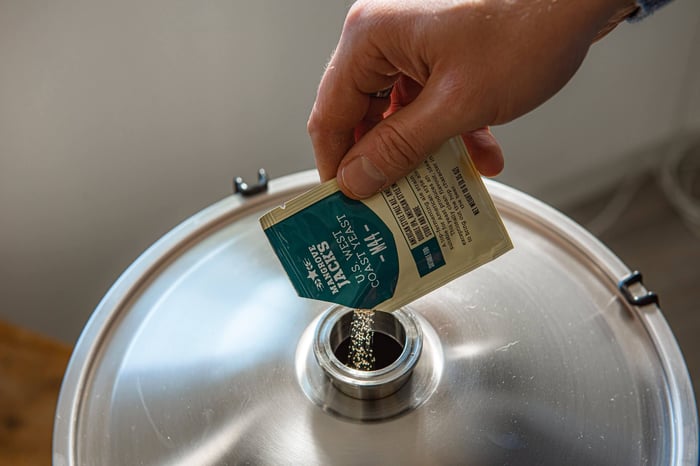Creating mead in Australia offers opportunities that exist nowhere else on earth. Our diverse landscapes produce honey varieties with character profiles that international brewers can only imagine, whilst our unique flora provides botanical ingredients that create truly distinctive meads. Let's explore how to harness these advantages.
Why Australian Mead Making Stands Apart
Australian mead benefits from several unique factors that create exceptional brewing opportunities. Our isolated ecosystem produces honey varieties with distinctive character, our diverse climate zones support different fruit production throughout the year, and our native botanicals offer flavour profiles impossible to replicate elsewhere.
Working with Australian Honey Varieties
Different Australian honey varieties create dramatically different mead characteristics. Jarrah from Western Australia produces rich, complex base flavours perfect for spiced meads. Leatherwood from Tasmania offers delicate floral notes that complement subtle fruits beautifully. Understanding these characteristics guides successful ingredient combinations.
Honey selection strategy: Match honey character to intended mead style. Bold honeys like ironbark work brilliantly with robust fruits and spices, whilst delicate varieties like orange blossom suit subtle combinations better.
Melomel Categories: Australian Context
Australian melomel production benefits from our extended growing seasons and diverse fruit production regions. From tropical Queensland mangoes to Tasmanian berries, we've got access to exceptional variety that creates unique brewing opportunities throughout the year.
Regional fruit advantages:
- Queensland: Tropical fruits creating exotic mead profiles
- New South Wales: Stone fruits and temperate varieties
- Victoria: Orchard fruits and berry production
- South Australia: Mediterranean-style fruits and citrus
- Western Australia: Unique native fruits and citrus varieties
- Tasmania: Cool-climate berries and orchard fruits
Quality sourcing: Establish relationships with growers who understand brewing requirements. Many now cater specifically to craft beverage makers, offering bulk quantities at competitive prices.
Distinctive Australian Styles
Native Bush Honey Meads
Bush honey varieties create meads with character profiles unique to Australian terroir. These honeys often possess complex flavour development that evolves significantly during fermentation and conditioning, creating exceptional base character for fruit and spice additions.
Bush honey considerations:
- Eucalyptus varieties: Create distinctive medicinal and floral notes
- Native wildflower blends: Offer complex, seasonal character variation
- Specific species honeys: Provide unique flavour profiles for experimental brewing
Quality assurance: Source bush honey from reputable beekeepers who understand craft brewing requirements. Raw, unprocessed honey typically provides superior fermentation characteristics compared to commercial alternatives.
Tropical Fruit Melomels
Australia's tropical regions provide access to fruits that create exceptional mead styles unavailable to temperate climate brewers. Mango, lychee, dragon fruit, and passion fruit offer distinctive character that reflects Australian subtropical terroir.
Tropical fruit techniques: These fruits often require specific handling to maximise flavour extraction whilst avoiding processing issues. Fresh fruit timing becomes crucial given seasonal availability windows.
Cool Climate Specialities
Tasmania and cool-climate mainland regions produce berries and stone fruits with intense flavour concentration perfect for mead production. These fruits develop excellent acid balance that complements honey sweetness naturally.
Seasonal planning: Cool climate fruits typically offer shorter harvest windows requiring advance planning and sometimes preservation techniques to extend brewing seasons effectively.
Australian Native Botanicals
Unique Flora Applications
Australian native plants provide mead ingredients found nowhere else globally. Lemon myrtle, wattle seed, native pepperberry, and bush tomato create distinctive flavour profiles that reflect our unique ecosystem.
Cultural respect: Always source native botanicals responsibly, respecting Indigenous cultural connections and sustainable harvesting practices. Many ingredients require specific knowledge for safe and effective use.
Processing considerations: Native botanicals often possess intense flavour compounds requiring careful measurement and timing during mead production. Start with small quantities and build experience gradually.
Traditional Bush Tucker Integration
Working with traditional bush tucker ingredients creates meads that celebrate Australian indigenous food culture whilst respecting cultural significance. Quandong, davidson plum, and finger lime offer unique possibilities for adventurous mead makers.
Educational approach: Research cultural significance and traditional uses before incorporating indigenous ingredients. This knowledge enhances brewing success whilst showing appropriate respect.
Regional Production Strategies
Climate Zone Adaptations
Australia's diverse climate zones require different approaches to mead production. Tropical regions benefit from temperature control during fermentation, whilst temperate areas might need seasonal timing adjustments.
Temperature management: Invest in temperature control equipment appropriate for your regional conditions. Consistent fermentation temperatures become crucial during extreme weather periods.
Seasonal Ingredient Availability
Plan production schedules around regional ingredient availability. Northern Australia offers different seasonal patterns compared to southern regions, creating opportunities for year-round production using different ingredient sources.
Harvest coordination: Establish relationships with multiple suppliers across different regions to ensure consistent ingredient access throughout the year.
Innovative Australian Approaches
Coffee and Chocolate Integration
Australia's exceptional coffee culture and growing chocolate industry provide outstanding ingredients for specialty meads. Single-origin coffees create distinctive character profiles, whilst local chocolate makers offer unique flavour combinations.
Local partnerships: Collaborate with local roasters, chocolatiers, and specialty food producers to access unique ingredients whilst supporting local food culture.
Wine Industry Synergy
Australian wine regions provide excellent grape juice sources for pyment production. Barossa Valley, Hunter Valley, Margaret River – each region offers distinctive grape varieties perfect for honey-wine combinations.
Winery relationships: Many wineries now sell juice to craft beverage makers, providing access to premium grape varieties whilst supporting Australian wine industry.
Spiced Mead Traditions
Mediterranean-Style Herbs
Australia's Mediterranean climate regions produce exceptional herbs for spiced mead production. Lavender, rosemary, thyme, and other culinary herbs develop concentrated essential oils perfect for honey wine applications.
Growing your own: Consider establishing herb gardens specifically for mead production. Fresh herbs often provide superior character compared to dried alternatives, particularly in Australian growing conditions.
Asian-Influenced Combinations
Australia's multicultural food culture provides inspiration for innovative spice combinations. Lemongrass, galangal, kaffir lime leaves, and other Asian aromatics create unique fusion meads reflecting contemporary Australian cuisine.
Experimental Territory
Braggot: Craft Beer Innovation
Australian craft beer excellence translates beautifully into braggot production. IPA braggots showcasing local hops, wheat beer styles, and innovative brewing techniques create distinctive Australian character.
Local craft breweries often support home brewing communities, sharing knowledge about ingredient combinations and techniques that work well in Australian conditions.
Barrel-Aging Opportunities
Australian spirits industry growth provides access to interesting barrel-aging opportunities. Whisky barrels, rum casks, and wine barrels each offer unique flavour development possibilities for specialty meads.
Quality equipment considerations: Australian conditions require robust equipment designed for our climate extremes and ingredient characteristics. Visit Grainfather Australia store Professional-grade equipment ensures consistent results whilst accommodating the unique requirements of Australian mead production.
Developing Australian Mead Character
The finest Australian meads showcase our unique combination of distinctive honey varieties, exceptional fruit quality, native botanical resources, and innovative brewing culture. Whether using Tasmanian leatherwood honey, Queensland tropical fruits, or native botanicals, successful Australian meads reflect terroir impossible to replicate elsewhere.
Our mead making journey connects ancient brewing traditions with contemporary Australian ingredients and techniques, creating something uniquely ours whilst respecting traditional mead making principles. That's what makes Australian mead culture so rewarding.
Grainfather Team










